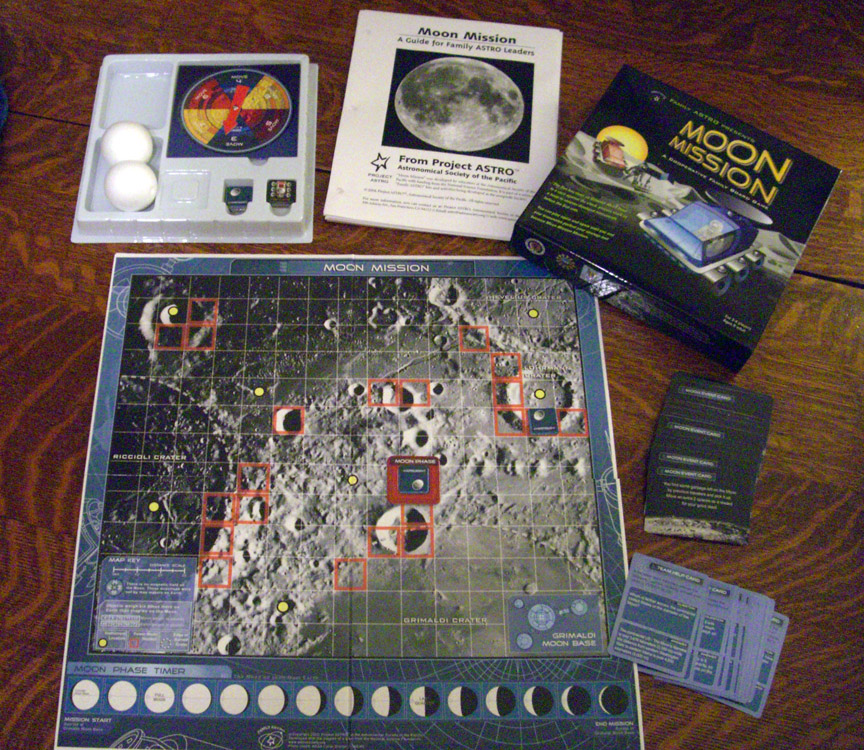
image from Astronomical Society of the Pacific
Most board games are competitive - who can win the most money or points or get to the end first. And most have little content. The Moon Mission Game from the Astronomical Society of the Pacific (ASP) is a race, but it requires collaborative play to be successful, and players will learn a little about the Moon. The scenario is that meteoroids have hit the Moon, damaging some of the scientific instruments located on the yellow dots. Players have only until sunset - 15 turns as counted with the Moon Phase Timer at the bottom of the board - to get the instruments and return safely to the Grimaldi Crater Moon Base. Along the way there are obstacles - solar flares and crevices - and bonuses - you are inspired by the sight of Earth, or NASA funds your research grant - to lend uncertainty to your progress. The Moon Mission Game is one of five activities that come as part of this ASP Project ASTRO kit. It really isn’t for families to buy so much as for science centers or other groups to use when they have family science nights. The activities are said to be for ages 8 to adult, but only adults who are with their young kids! At $39 this seems expensive, but the board game and the other activities can be used many times during different family nights.
Technical Details:
Anyone who has played the game will recognize three mistakes I’ve made in placing objects on the board - that happens when you take photos before opening the instruction book!
Now you can support LPOD when you buy ANY book from Amazon thru LPOD
COMMENTS?
Click on this icon File:PostIcon.jpg at the upper right to post a comment.



